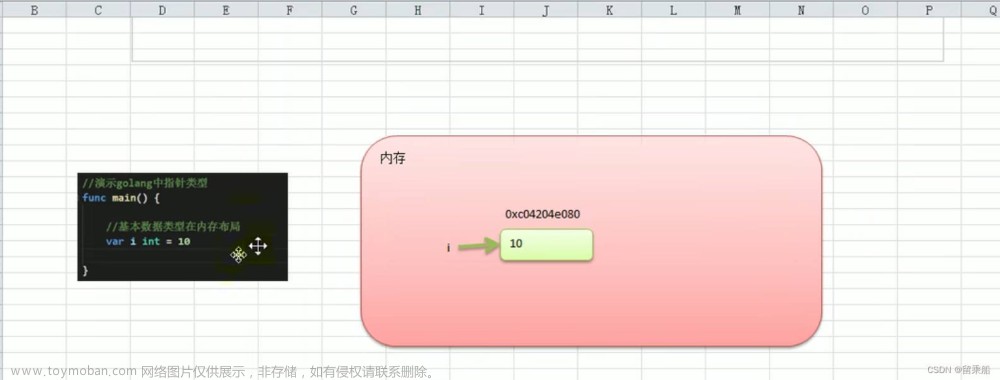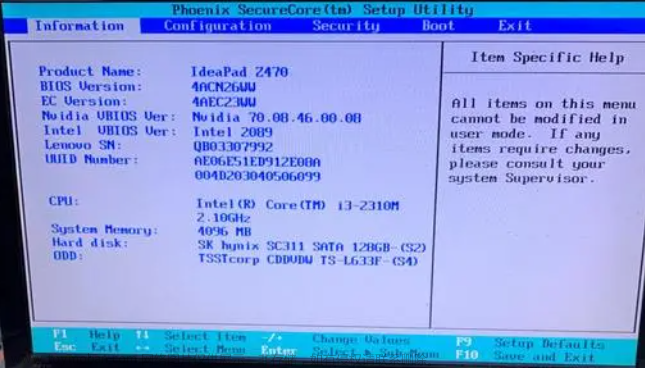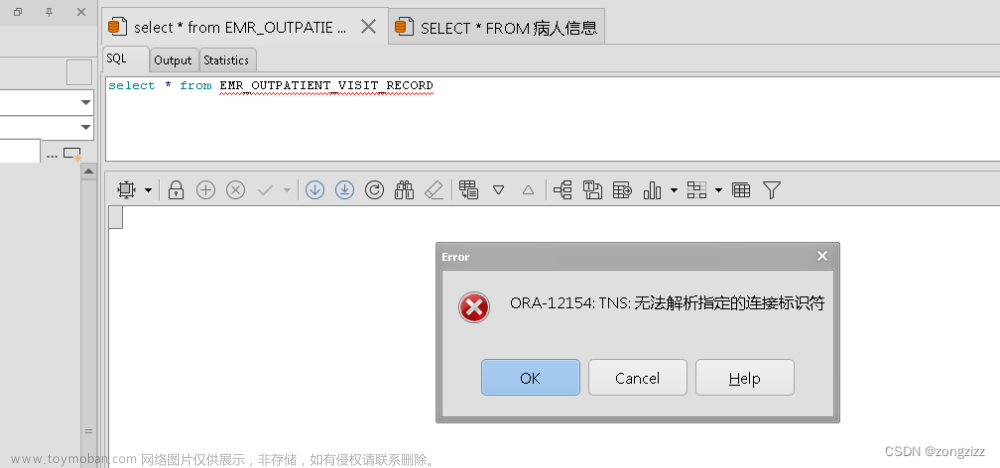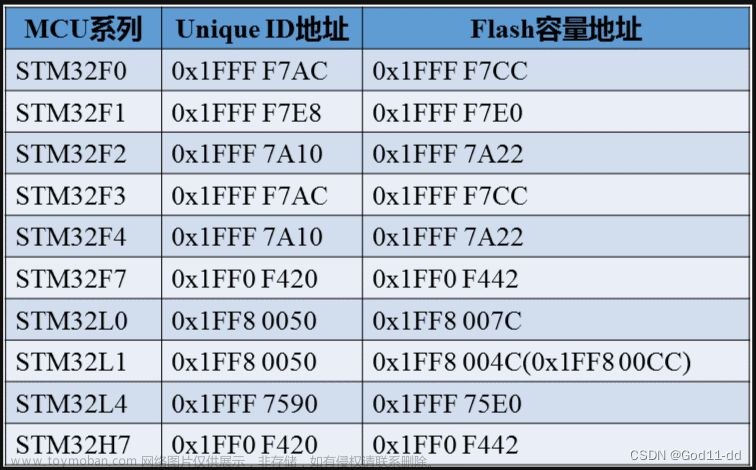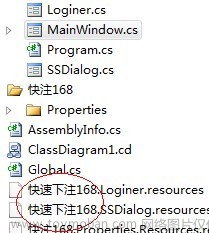《临江仙》
作者:缠中说禅
浊水倾波三万里,愀然独坐孤峰。龙潜狮睡候飙风。无情皆竖子,有泪亦英雄。
长剑倚天星斗烂,古今过眼成空。乾坤俯仰任穷通。半轮沧海上,一苇大江东。
一、yolov7环境搭建
参见我的其他博客文章,还有个下载文档,免费的
二、TT100K数据集处理
2.1 数据集下载19多个G
https://bj.bcebos.com/ai-studio-online/11d4aa5b64674c399ae4a092dd2c99a1be48927a53ba41f09659040497f7ad23?authorization=bce-auth-v1%2F5cfe9a5e1454405eb2a975c43eace6ec%2F2022-09-04T15%3A26%3A20Z%2F-1%2F%2Fb6ad292a7a8dea9aaaa342f6c29ddf7f238f17f4b0de359440ad2ecffd88196d&responseContentDisposition=attachment%3B%20filename%3Dtt100k_2021.zip
解压后的目录:

2.2 代码用法说明
我是在如下文章指导下进行的数据处理,把他的代码做了一些改动,参考时候请注意。
参考链接:
win下YOLOv7训练自己的数据集(交通标志TT100K识别)_tt100k数据集_我宿孤栈的博客-CSDN博客
tt100k.class_statistics()#对TT100K中的数据集进行预处理,代码中是只保留包含图片数超过100的类别;
tt100k.original_datasets2object_datasets_re()#对TT100K数据集的训练集、验证集和测试集进行比例划分;7:2:1=train:val:test.然后我加了一些代码,顺便把分类好的数据图片进行了转移,也就是把保留包含图片数超过100的类别的图片换了个地方保存。
tt100k.coco_json2yolo_txt('val')#将CoCo格式的标签json文件(3个json文件)转换为YOLO格式的txt(注意此处需要分别调用三次,train、val和test,对应生成其3个.txt文件);
2.3 代码
2.3.1 如下是整体代码
import os
import json
from random import random
import cv2
import shutil
import json
import xml.dom.minidom
from tqdm import tqdm
import argparse
# from jinxSkills.jinx_opencv.datasets_transform.dataset_transform import DataSets_transform
class TT100K2COCO:
def __init__(self):
self.original_datasets = 'tt100k'
self.to_datasets = 'coco'
def class_statistics(self):
# os.makedirs('annotations', exist_ok=True)
# 存放数据的父路径
parent_path = 'E:/WorkSpace/YOLO/data/data'
#print(parent_path)
# 读TT100K原始数据集标注文件
with open(os.path.join(parent_path, 'annotations.json')) as origin_json:
origin_dict = json.load(origin_json)
classes = origin_dict['types']
# 建立统计每个类别包含的图片的字典
sta = {}
for i in classes:
sta[i] = []
images_dic = origin_dict['imgs']
# 记录所有保留的图片
saved_images = []
# 遍历TT100K的imgs
for image_id in images_dic:
image_element = images_dic[image_id]##
image_path = 'E:/WorkSpace/YOLO/data/data/'+image_element['path']
#print(image_path)
# 添加图像的信息到dataset中
image_path = image_path.split('/')[-1]
obj_list = image_element['objects']
#print(image_path)
# 遍历每张图片的标注信息
for anno_dic in obj_list:
label_key = anno_dic['category']
# 防止一个图片多次加入一个标签类别
if image_path not in sta[label_key]:
sta[label_key].append(image_path)
# 只保留包含图片数超过100的类别(重新划分,阈值100可根据需求修改)
result = {k: v for k, v in sta.items() if len(v) >= 100}
for i in result:
#print("the type of {} includes {} images".format(i, len(result[i])))
saved_images.extend(result[i])
saved_images = list(set(saved_images))
#print("total types is {}".format(len(result)))
type_list = list(result.keys())
result = {"type": type_list, "details": result, "images": saved_images}
print(type_list)
# 保存结果
json_name = os.path.join(parent_path, 'statistics.json')
with open(json_name, 'w', encoding="utf-8") as f:
json.dump(result, f, ensure_ascii=False, indent=1)
def original_datasets2object_datasets_re(self):
'''
重新划分数据集
:return:
'''
# os.makedirs('annotations2', exist_ok=True)
# 存放数据的父路径
parent_path = 'E:/WorkSpace/YOLO/data/data/'
# 读TT100K原始数据集标注文件
with open(os.path.join(parent_path, 'annotations.json')) as origin_json:
origin_dict = json.load(origin_json)
with open(os.path.join(parent_path, 'statistics.json')) as select_json:
select_dict = json.load(select_json)
classes = select_dict['type']
train_dataset = {'info': {}, 'licenses': [], 'categories': [], 'images': [], 'annotations': []}
val_dataset = {'info': {}, 'licenses': [], 'categories': [], 'images': [], 'annotations': []}
test_dataset = {'info': {}, 'licenses': [], 'categories': [], 'images': [], 'annotations': []}
label = {} # 记录每个标志类别的id
count = {} # 记录每个类别的图片数
owntype_sum = {}
info = {
"year": 2021, # 年份
"version": '1.0', # 版本
"description": "TT100k_to_coco", # 数据集描述
"contributor": "Tecent&Tsinghua", # 提供者
"url": 'https://cg.cs.tsinghua.edu.cn/traffic-sign/', # 下载地址
"date_created": 2021 - 1 - 15
}
licenses = {
"id": 1,
"name": "null",
"url": "null",
}
train_dataset['info'] = info
val_dataset['info'] = info
test_dataset['info'] = info
train_dataset['licenses'] = licenses
val_dataset['licenses'] = licenses
test_dataset['licenses'] = licenses
# 建立类别和id的关系
for i, cls in enumerate(classes):
train_dataset['categories'].append({'id': i, 'name': cls, 'supercategory': 'traffic_sign'})
val_dataset['categories'].append({'id': i, 'name': cls, 'supercategory': 'traffic_sign'})
test_dataset['categories'].append({'id': i, 'name': cls, 'supercategory': 'traffic_sign'})
label[cls] = i
count[cls] = 0
owntype_sum[cls] = 0
images_dic = origin_dict['imgs']#源annotations.json
obj_id = 1
# 计算出每个类别共‘包含’的图片数
for image_id in images_dic:
image_element = images_dic[image_id]
image_path = image_element['path']
image_name = image_path.split('/')[-1]
#print(image_name)#32770.jpg
# 在所选的类别图片中
if image_name not in select_dict['images']:
continue
else:
#加一个赋值图片的语句
i=0
# 处理TT100K中的标注信息
obj_list = image_element['objects']
# 记录图片中包含最多的实例所属的type
includes_type = {}
for anno_dic in obj_list:
if anno_dic["category"] not in select_dict["type"]:
continue
# print(anno_dic["category"])
if anno_dic["category"] in includes_type:
includes_type[anno_dic["category"]] += 1
else:
includes_type[anno_dic["category"]] = 1
# print(includes_type)
own_type = max(includes_type, key=includes_type.get)
owntype_sum[own_type] += 1
# TT100K的annotation转换成coco的
for image_id in images_dic:
image_element = images_dic[image_id]
image_path = image_element['path']
image_name = image_path.split('/')[-1]
# 在所选的类别图片中
if image_name not in select_dict['images']:
continue
##print("dealing with {} image".format(image_path))
# shutil.copy(os.path.join(parent_path,image_path),os.path.join(parent_path,"dataset/JPEGImages"))
# 处理TT100K中的标注信息
obj_list = image_element['objects']
# 记录图片中包含最多的实例所属的type
includes_type = {}
for anno_dic in obj_list:
if anno_dic["category"] not in select_dict["type"]:
continue
# print(anno_dic["category"])
if anno_dic["category"] in includes_type:
includes_type[anno_dic["category"]] += 1
else:
includes_type[anno_dic["category"]] = 1
# print(includes_type)
own_type = max(includes_type, key=includes_type.get)
count[own_type] += 1
num_rate = count[own_type] / owntype_sum[own_type]
# 切换dataset的引用对象,从而划分数据集根据每个类别类别的总数量按7:2:1分为了train_set,val_set,test_set。
# 其中每个图片所属类别根据该图片包含的类别的数量决定(归属为含有类别最多的类别)
target = 'E:/WorkSpace/YOLO/data/'
if num_rate < 0.7:
dataset = train_dataset
#print(image_path)
shutil.copyfile(parent_path + image_path, target + '/train/' + image_path.split("/")[1])
elif num_rate < 0.9:
dataset = val_dataset
shutil.copyfile(parent_path + image_path, target + '/val/' + image_path.split("/")[1])
#print(image_path)
else:
#print("dataset=test_dataset")
dataset = test_dataset
#print(image_path)
shutil.copyfile(parent_path + image_path, target + '/test/' + image_path.split("/")[1])
for anno_dic in obj_list:
if anno_dic["category"] not in select_dict["type"]:
continue
x = anno_dic['bbox']['xmin']
y = anno_dic['bbox']['ymin']
width = anno_dic['bbox']['xmax'] - anno_dic['bbox']['xmin']
height = anno_dic['bbox']['ymax'] - anno_dic['bbox']['ymin']
label_key = anno_dic['category']
dataset['annotations'].append({
'area': width * height,
'bbox': [x, y, width, height],
'category_id': label[label_key],
'id': obj_id,
'image_id': image_id,
'iscrowd': 0,
# mask, 矩形是从左上角点按顺时针的四个顶点
'segmentation': [[x, y, x + width, y, x + width, y + height, x, y + height]]
})
# 每个标注的对象id唯一
obj_id += 1
# 用opencv读取图片,得到图像的宽和高
im = cv2.imread(os.path.join(parent_path, image_path))
#####---------------------------------------------
##print(image_path) #test other train
prefix = image_path.split("/")[0]
H,W,_ = im.shape
# 添加图像的信息到dataset中
dataset['images'].append({'file_name': image_name,
'id': image_id,
'width': W,
'height': H})
# 保存结果
for phase in ['train', 'val', 'test']:
json_name = os.path.join(parent_path, 'dataset/annotations/{}.json'.format(phase))
with open(json_name, 'w', encoding="utf-8") as f:
if phase == 'train':
shutil.copyfile(parent_path + image_path, target + '/train/' + image_path.split("/")[1])
json.dump(train_dataset, f, ensure_ascii=False, indent=1)
if phase == 'val':
json.dump(val_dataset, f, ensure_ascii=False, indent=1)
if phase == 'test':
json.dump(test_dataset, f, ensure_ascii=False, indent=1)
def coco_json2yolo_txt(self, class_json):
# COCO 格式的数据集转化为 YOLO 格式的数据集
# --json_path 输入的json文件路径
# --save_path 保存的文件夹名字,默认为当前目录下的labels。
def convert(size, box):
dw = 1. / (size[0])
dh = 1. / (size[1])
x = box[0] + box[2] / 2.0
y = box[1] + box[3] / 2.0
w = box[2]
h = box[3]
# round函数确定(xmin, ymin, xmax, ymax)的小数位数
x = round(x * dw, 6)
w = round(w * dw, 6)
y = round(y * dh, 6)
h = round(h * dh, 6)
return (x, y, w, h)
# class_json = 'train'
json_file = os.path.join(
'E:/WorkSpace/YOLO/data/data/dataset/annotations/%s.json' % class_json) # COCO Object Instance 类型的标注
#E:/WorkSpace/YOLO/data/data/dataset/annotations/val.json
#print(json_file)
# ana_txt_save_path = 'D:/jinxData/TT100K/data/dataset/annotations/train' # 保存的路径
ana_txt_save_path = os.path.join('E:/WorkSpace/YOLO/data/data/dataset/annotations/', class_json) # 保存的路径
#print(class_json)#val
#print(ana_txt_save_path)#E:/WorkSpace/YOLO/data/data/dataset/annotations\val
data = json.load(open(json_file, 'r'))
if not os.path.exists(ana_txt_save_path):
os.makedirs(ana_txt_save_path)
id_map = {} # coco数据集的id不连续!重新映射一下再输出!
with open(os.path.join(ana_txt_save_path, 'classes.txt'), 'w') as f:
# 写入classes.txt
for i, category in enumerate(data['categories']):
f.write(f"{category['name']}\n")
id_map[category['id']] = i
# print(id_map)
# 这里需要根据自己的需要,更改写入图像相对路径的文件位置。
list_file = open(os.path.join(ana_txt_save_path, '%s.txt' % class_json.format()), 'w')
for img in tqdm(data['images']):
filename = img["file_name"]
img_width = img["width"]
img_height = img["height"]
img_id = img["id"]
head, tail = os.path.splitext(filename)
ana_txt_name = head + ".txt" # 对应的txt名字,与jpg一致
f_txt = open(os.path.join(ana_txt_save_path, ana_txt_name), 'w')
for ann in data['annotations']:
if ann['image_id'] == img_id:
box = convert((img_width, img_height), ann["bbox"])
f_txt.write("%s %s %s %s %s\n" % (id_map[ann["category_id"]], box[0], box[1], box[2], box[3]))
f_txt.close()
#将图片的相对路径写入train2017或val2017的路径 'E:/WorkSpace/YOLO/yolov7-main/yolov7-main/dataset/TT100K/images/'
#list_file.write('%s/%s/%s.jpg\n' % ('E:/WorkSpace/YOLO/data/data/',class_json.format(), head))
list_file.write('%s/%s/%s.jpg\n' % ('E:/WorkSpace/YOLO/yolov7-main/yolov7-main/data/TT100K/images/', class_json.format(), head))
list_file.close()
if __name__ == '__main__':
tt100k = TT100K2COCO()
#tt100k.class_statistics()
#tt100k.original_datasets2object_datasets_re()
tt100k.coco_json2yolo_txt('val')
tt100k.coco_json2yolo_txt('test')
tt100k.coco_json2yolo_txt('train')
2.3.2 如下是每个函数的代码以及我的注释
class_statistics(self)函数:把data1看成data把,因为我已经有了个data文件夹,为了写教程又重新解压了一份。

parent_path = 'E:/WorkSpace/YOLO/data/data'
这一块可以不用加上'E:/WorkSpace/YOLO/data/data/'+ 直接为image_path = image_element['path']就可以了 image_path = 'E:/WorkSpace/YOLO/data/data/'+image_element['path']
改完上述两个部分后,运行该函数,会生成一个statistics.json文件。
def class_statistics(self):
# os.makedirs('annotations', exist_ok=True)
# 存放数据的父路径
parent_path = 'E:/WorkSpace/YOLO/data/data'
#print(parent_path)
# 读TT100K原始数据集标注文件
with open(os.path.join(parent_path, 'annotations.json')) as origin_json:
origin_dict = json.load(origin_json)
classes = origin_dict['types']
# 建立统计每个类别包含的图片的字典
sta = {}
for i in classes:
sta[i] = []
images_dic = origin_dict['imgs']
# 记录所有保留的图片
saved_images = []
# 遍历TT100K的imgs
for image_id in images_dic:
image_element = images_dic[image_id]##
image_path = 'E:/WorkSpace/YOLO/data/data/'+image_element['path']
#print(image_path)
# 添加图像的信息到dataset中
image_path = image_path.split('/')[-1]
obj_list = image_element['objects']
#print(image_path)
# 遍历每张图片的标注信息
for anno_dic in obj_list:
label_key = anno_dic['category']
# 防止一个图片多次加入一个标签类别
if image_path not in sta[label_key]:
sta[label_key].append(image_path)
# 只保留包含图片数超过100的类别(重新划分,阈值100可根据需求修改)
result = {k: v for k, v in sta.items() if len(v) >= 100}
for i in result:
#print("the type of {} includes {} images".format(i, len(result[i])))
saved_images.extend(result[i])
saved_images = list(set(saved_images))
#print("total types is {}".format(len(result)))
type_list = list(result.keys())
result = {"type": type_list, "details": result, "images": saved_images}
print(type_list)
# 保存结果
json_name = os.path.join(parent_path, 'statistics.json')
with open(json_name, 'w', encoding="utf-8") as f:
json.dump(result, f, ensure_ascii=False, indent=1)
original_datasets2object_datasets_re函数
改动比较多注意。
1.parent_path = 'E:/WorkSpace/YOLO/data/data/' 不用说了吧
2.加一句target = 'E:/WorkSpace/YOLO/data/',就是一个你最后要用的test train val图片的目录,可以自己指定。
3.3个复制函数,我最后生成的三个文件夹
4.运行函数,会很慢,最后会生成3的三个文件夹,已经3个json文件,还有label文件


def original_datasets2object_datasets_re(self):
'''
重新划分数据集
:return:
'''
# os.makedirs('annotations2', exist_ok=True)
# 存放数据的父路径
parent_path = 'E:/WorkSpace/YOLO/data/data/'
# 读TT100K原始数据集标注文件
with open(os.path.join(parent_path, 'annotations.json')) as origin_json:
origin_dict = json.load(origin_json)
with open(os.path.join(parent_path, 'statistics.json')) as select_json:
select_dict = json.load(select_json)
classes = select_dict['type']
train_dataset = {'info': {}, 'licenses': [], 'categories': [], 'images': [], 'annotations': []}
val_dataset = {'info': {}, 'licenses': [], 'categories': [], 'images': [], 'annotations': []}
test_dataset = {'info': {}, 'licenses': [], 'categories': [], 'images': [], 'annotations': []}
label = {} # 记录每个标志类别的id
count = {} # 记录每个类别的图片数
owntype_sum = {}
info = {
"year": 2021, # 年份
"version": '1.0', # 版本
"description": "TT100k_to_coco", # 数据集描述
"contributor": "Tecent&Tsinghua", # 提供者
"url": 'https://cg.cs.tsinghua.edu.cn/traffic-sign/', # 下载地址
"date_created": 2021 - 1 - 15
}
licenses = {
"id": 1,
"name": "null",
"url": "null",
}
train_dataset['info'] = info
val_dataset['info'] = info
test_dataset['info'] = info
train_dataset['licenses'] = licenses
val_dataset['licenses'] = licenses
test_dataset['licenses'] = licenses
# 建立类别和id的关系
for i, cls in enumerate(classes):
train_dataset['categories'].append({'id': i, 'name': cls, 'supercategory': 'traffic_sign'})
val_dataset['categories'].append({'id': i, 'name': cls, 'supercategory': 'traffic_sign'})
test_dataset['categories'].append({'id': i, 'name': cls, 'supercategory': 'traffic_sign'})
label[cls] = i
count[cls] = 0
owntype_sum[cls] = 0
images_dic = origin_dict['imgs']#源annotations.json
obj_id = 1
# 计算出每个类别共‘包含’的图片数
for image_id in images_dic:
image_element = images_dic[image_id]
image_path = image_element['path']
image_name = image_path.split('/')[-1]
#print(image_name)#32770.jpg
# 在所选的类别图片中
if image_name not in select_dict['images']:
continue
else:
#加一个赋值图片的语句
i=0
# 处理TT100K中的标注信息
obj_list = image_element['objects']
# 记录图片中包含最多的实例所属的type
includes_type = {}
for anno_dic in obj_list:
if anno_dic["category"] not in select_dict["type"]:
continue
# print(anno_dic["category"])
if anno_dic["category"] in includes_type:
includes_type[anno_dic["category"]] += 1
else:
includes_type[anno_dic["category"]] = 1
# print(includes_type)
own_type = max(includes_type, key=includes_type.get)
owntype_sum[own_type] += 1
# TT100K的annotation转换成coco的
for image_id in images_dic:
image_element = images_dic[image_id]
image_path = image_element['path']
image_name = image_path.split('/')[-1]
# 在所选的类别图片中
if image_name not in select_dict['images']:
continue
##print("dealing with {} image".format(image_path))
# shutil.copy(os.path.join(parent_path,image_path),os.path.join(parent_path,"dataset/JPEGImages"))
# 处理TT100K中的标注信息
obj_list = image_element['objects']
# 记录图片中包含最多的实例所属的type
includes_type = {}
for anno_dic in obj_list:
if anno_dic["category"] not in select_dict["type"]:
continue
# print(anno_dic["category"])
if anno_dic["category"] in includes_type:
includes_type[anno_dic["category"]] += 1
else:
includes_type[anno_dic["category"]] = 1
# print(includes_type)
own_type = max(includes_type, key=includes_type.get)
count[own_type] += 1
num_rate = count[own_type] / owntype_sum[own_type]
# 切换dataset的引用对象,从而划分数据集根据每个类别类别的总数量按7:2:1分为了train_set,val_set,test_set。
# 其中每个图片所属类别根据该图片包含的类别的数量决定(归属为含有类别最多的类别)
target = 'E:/WorkSpace/YOLO/data/'
if num_rate < 0.7:
dataset = train_dataset
#print(image_path)
shutil.copyfile(parent_path + image_path, target + '/train/' + image_path.split("/")[1])
elif num_rate < 0.9:
dataset = val_dataset
shutil.copyfile(parent_path + image_path, target + '/val/' + image_path.split("/")[1])
#print(image_path)
else:
#print("dataset=test_dataset")
dataset = test_dataset
#print(image_path)
shutil.copyfile(parent_path + image_path, target + '/test/' + image_path.split("/")[1])
for anno_dic in obj_list:
if anno_dic["category"] not in select_dict["type"]:
continue
x = anno_dic['bbox']['xmin']
y = anno_dic['bbox']['ymin']
width = anno_dic['bbox']['xmax'] - anno_dic['bbox']['xmin']
height = anno_dic['bbox']['ymax'] - anno_dic['bbox']['ymin']
label_key = anno_dic['category']
dataset['annotations'].append({
'area': width * height,
'bbox': [x, y, width, height],
'category_id': label[label_key],
'id': obj_id,
'image_id': image_id,
'iscrowd': 0,
# mask, 矩形是从左上角点按顺时针的四个顶点
'segmentation': [[x, y, x + width, y, x + width, y + height, x, y + height]]
})
# 每个标注的对象id唯一
obj_id += 1
# 用opencv读取图片,得到图像的宽和高
im = cv2.imread(os.path.join(parent_path, image_path))
#####---------------------------------------------
##print(image_path) #test other train
prefix = image_path.split("/")[0]
H,W,_ = im.shape
# 添加图像的信息到dataset中
dataset['images'].append({'file_name': image_name,
'id': image_id,
'width': W,
'height': H})
# 保存结果
for phase in ['train', 'val', 'test']:
json_name = os.path.join(parent_path, 'dataset/annotations/{}.json'.format(phase))
with open(json_name, 'w', encoding="utf-8") as f:
if phase == 'train':
json.dump(train_dataset, f, ensure_ascii=False, indent=1)
if phase == 'val':
json.dump(val_dataset, f, ensure_ascii=False, indent=1)
if phase == 'test':
json.dump(test_dataset, f, ensure_ascii=False, indent=1)
coco_json2yolo_txt(self, class_json)函数:生成路径txt
第一个框是你的 如下三个文件路径,第二个框是你要生成的txt文件保存路径,可以自己定


这个地方是yolo源码文件里面的一个路径,可以先看看我后面的yolo数据集文件夹的建立了,再来确认这个路径

def coco_json2yolo_txt(self, class_json):
# COCO 格式的数据集转化为 YOLO 格式的数据集
# --json_path 输入的json文件路径
# --save_path 保存的文件夹名字,默认为当前目录下的labels。
def convert(size, box):
dw = 1. / (size[0])
dh = 1. / (size[1])
x = box[0] + box[2] / 2.0
y = box[1] + box[3] / 2.0
w = box[2]
h = box[3]
# round函数确定(xmin, ymin, xmax, ymax)的小数位数
x = round(x * dw, 6)
w = round(w * dw, 6)
y = round(y * dh, 6)
h = round(h * dh, 6)
return (x, y, w, h)
# class_json = 'train'
json_file = os.path.join(
'E:/WorkSpace/YOLO/data/data/dataset/annotations/%s.json' % class_json) # COCO Object Instance 类型的标注
#E:/WorkSpace/YOLO/data/data/dataset/annotations/val.json
#print(json_file)
# ana_txt_save_path = 'D:/jinxData/TT100K/data/dataset/annotations/train' # 保存的路径
ana_txt_save_path = os.path.join('E:/WorkSpace/YOLO/data/data/dataset/annotations/', class_json) # 保存的路径
#print(class_json)#val
#print(ana_txt_save_path)#E:/WorkSpace/YOLO/data/data/dataset/annotations\val
data = json.load(open(json_file, 'r'))
if not os.path.exists(ana_txt_save_path):
os.makedirs(ana_txt_save_path)
id_map = {} # coco数据集的id不连续!重新映射一下再输出!
with open(os.path.join(ana_txt_save_path, 'classes.txt'), 'w') as f:
# 写入classes.txt
for i, category in enumerate(data['categories']):
f.write(f"{category['name']}\n")
id_map[category['id']] = i
# print(id_map)
# 这里需要根据自己的需要,更改写入图像相对路径的文件位置。
list_file = open(os.path.join(ana_txt_save_path, '%s.txt' % class_json.format()), 'w')
for img in tqdm(data['images']):
filename = img["file_name"]
img_width = img["width"]
img_height = img["height"]
img_id = img["id"]
head, tail = os.path.splitext(filename)
ana_txt_name = head + ".txt" # 对应的txt名字,与jpg一致
f_txt = open(os.path.join(ana_txt_save_path, ana_txt_name), 'w')
for ann in data['annotations']:
if ann['image_id'] == img_id:
box = convert((img_width, img_height), ann["bbox"])
f_txt.write("%s %s %s %s %s\n" % (id_map[ann["category_id"]], box[0], box[1], box[2], box[3]))
f_txt.close()
#将图片的相对路径写入train2017或val2017的路径 'E:/WorkSpace/YOLO/yolov7-main/yolov7-main/dataset/TT100K/images/'
#list_file.write('%s/%s/%s.jpg\n' % ('E:/WorkSpace/YOLO/data/data/',class_json.format(), head))
list_file.write('%s/%s/%s.jpg\n' % ('E:/WorkSpace/YOLO/yolov7-main/yolov7-main/data/TT100K/images/', class_json.format(), head))
list_file.close()以上部分是对数据集处理部分代码的修改,每个函数可以单独运行。且我丢弃了原作者的几个函数。
三、开始训练
参考链接:yolov7训练自己的数据集_我把把C的博客-CSDN博客
3.1数据集准备
创建目录,把生成的相关文件移动到对应目录,上面说到的这个路径就知道怎么改了


3.2 创建yaml文件
train: E:/WorkSpace/YOLO/yolov7-main/yolov7-main/data/TT100K/train.txt
val: E:/WorkSpace/YOLO/yolov7-main/yolov7-main/data/TT100K/val.txt
test: E:/WorkSpace/YOLO/yolov7-main/yolov7-main/data/TT100K/test.txt
nc: 42
names: ['i2','i4','i5','il100','il60','il80','io','ip','p10','p11',
'p12','p19','p23','p26','p27','p3','p5','p6','pg','ph4',
'ph4.5','pl100','pl120','pl20','pl30','pl40','pl5','pl50','pl60','pl70',
'pl80','pm20','pm30','pm55','pn','pne','po','pr40','w13','w55',
'w57','w59'
]3.3 修改yolov7.yaml文件

3.4 修改训练文件参数
 文章来源:https://www.toymoban.com/news/detail-462017.html
文章来源:https://www.toymoban.com/news/detail-462017.html
大功告成,训练中出现的问题,网上都能找到,我就不列举了文章来源地址https://www.toymoban.com/news/detail-462017.html
到了这里,关于YOLOV7训练TT100K交通标识符数据集的文章就介绍完了。如果您还想了解更多内容,请在右上角搜索TOY模板网以前的文章或继续浏览下面的相关文章,希望大家以后多多支持TOY模板网!

